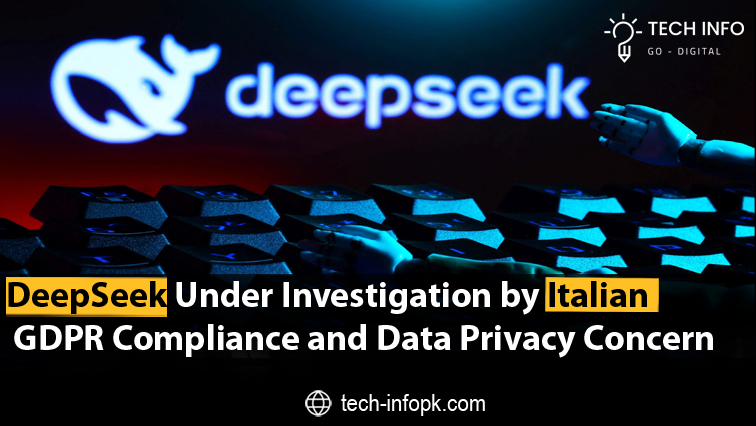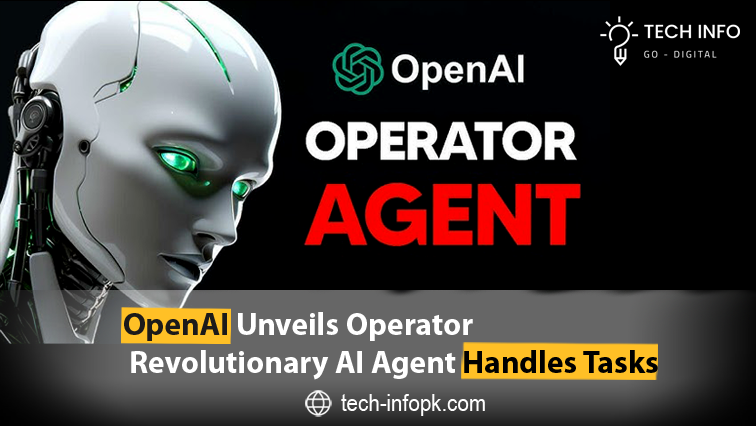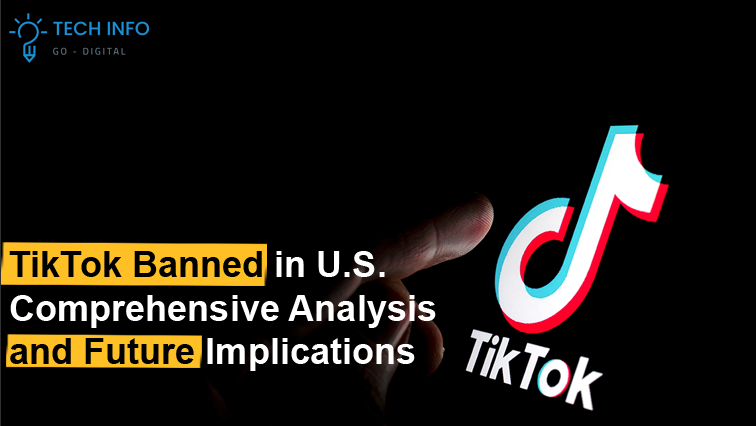DeepSeek Under Investigation by Italian Watchdog Over GDPR Compliance and Data Privacy Concern

DeepSeek Meteoric Rise and Growing Scrutiny Over Data Practices The Chinese artificial intelligence company DeepSeek has rapidly emerged as a disruptive force in the AI industry. However, its sudden rise has led to increasing concerns regarding its data privacy practices and compliance with regulatory frameworks. While some view Deep Seek as a revolutionary player in the AI landscape, others suspect it may be part of a larger financial strategy orchestrated by its hedge fund parent company, possibly to influence the stock market. Regardless of speculation, Deep Seek has undeniably gained significant traction and, in doing so, has attracted the attention of European data protection authorities. Italian Data Investigation into DeepSeek Compliance with GDPR In what is considered one of the first major regulatory actions against Deep-Seek, Euro consumers—a coalition of European consumer advocacy groups—has collaborated with the Italian Data Protection Authority (DPA) to formally challenge the company’s data handling practices. The complaint raises concerns about Deep-Seek adherence to the General Data Protection Regulation (GDPR), a legal framework governing data privacy and security across the European Union. The Italian DPA confirmed today that it has officially contacted DeepSeek with a request for detailed information regarding its data collection and processing methods. The watchdog issued a public warning, stating: “A rischio i dati di milioni di persone in Italia” (“The data of millions of Italians is at risk”). DeepSeek has been given 20 days to respond to this request. Data Storage and Processing The China Factor A key issue that has drawn attention is DeepSeek’s operational base in China. According to its privacy policy, DeepSeek collects, processes, and stores user data within China, raising concerns about cross-border data transfers. While the company asserts that these transfers comply with applicable data protection laws, regulators are demanding greater transparency regarding how user information is handled, stored, and safeguarded. Euro consumers Concerns Lack of Clarity on Data Collection and AI Training Euroconsumers, which previously led a successful case against AI chatbot Grok for improper data usage, is seeking answers regarding: Additionally, the Italian DPA has requested clarity on whether DeepSeek engages in web scraping activities to collect information from users who are not explicitly registered on the platform. If such practices are confirmed, regulators will assess whether affected individuals were properly informed of how their data is being used. Concerns Over Minors Data Protection and Age Restrictions Another significant concern raised in the complaint is the protection of minors using Deep-Seek services. The watchdog pointed out that DeepSeek has not provided sufficient details regarding its approach to age verification and restrictions on minors’ access to AI-powered tools. While DeepSeek’s privacy policy states that its platform is not intended for users under 18, it lacks enforcement mechanisms to verify users’ ages effectively. Furthermore, it suggests that individuals between 14 and 18 should review the privacy policy with parental guidance, raising questions about whether minors’ data is adequately protected. European Commission Position on DeepSeek Compliance with AI Regulations DeepSeek’s rapid expansion into European markets has prompted broader discussions at the European Commission. During a recent press conference, Thomas Regnier, Commission Spokesperson for Tech Sovereignty, addressed concerns related to security, privacy, and censorship linked to DeepSeek’s services. While the European Commission has yet to launch a formal investigation, Regnier emphasized that all AI services operating within Europe must adhere to the AI Act and GDPR. However, when asked whether DeepSeek currently complies with EU data regulations, he declined to provide a definitive answer. Questions regarding content censorship—particularly on politically sensitive topics in China—also remain unresolved, with EU officials indicating that it is too early to determine if the app’s policies violate free speech protections in Europe. Potential Consequences for DeepSeek and the Future of AI Regulation DeepSeek ongoing legal scrutiny could set a precedent for how AI companies operate within Europe. If the Italian DPA determines that DeepSeek’s practices violate GDPR, the company could face substantial penalties, including fines and potential restrictions on its operations within the European Union. Additionally, this case may prompt further investigations by other EU member states, increasing regulatory pressure on AI developers worldwide. Conclusion As artificial intelligence continues to evolve, regulatory bodies face the challenge of balancing technological advancements with stringent data protection laws. The investigation into DeepSeek underscores the growing concerns surrounding AI’s impact on user privacy, cross-border data transfers, and the ethical use of personal information. While DeepSeek has positioned itself as a leader in AI-driven solutions, its ability to maintain trust and compliance with global regulations will play a crucial role in shaping its future. The coming weeks will be pivotal in determining whether DeepSeek can provide satisfactory answers to regulators or if it will face more extensive legal battles. As the AI industry moves forward, companies must prioritize transparency, ethical AI practices, and compliance with international privacy standards to ensure sustainable growth in an increasingly regulated digital landscape.
DeepSeek Gains Momentum as Former Intel CEO Pat Gelsinger Adopts It Over OpenAI for His Startup Gloo

DeepSeek’s R1 Model Disrupts the AI Landscape DeepSeek’s latest open-source AI reasoning model, R1, has set the tech industry abuzz, sparking a significant reaction in the stock market and the AI development landscape. The unveiling of R1 not only led to a sell-off in Nvidia’s stock but also propelled DeepSeek’s consumer app to the top of the app store rankings. The model’s remarkable capabilities and cost efficiency have made it a disruptive force, challenging the dominance of leading AI models that require immense computing resources and financial investment. In an announcement last month, DeepSeek revealed that it had successfully trained R1 using a data center powered by approximately 2,000 Nvidia H800 GPUs over a span of just two months, at a total cost of around $5.5 million. This revelation came as a shock to many, given that top-tier AI models in the United States and other developed markets are trained using extensive data centers that cost billions of dollars and leverage cutting-edge AI hardware. Last week, DeepSeek published a detailed research paper showcasing R1’s performance, demonstrating its ability to match or exceed the capabilities of the most advanced reasoning models currently available. The response from the technology sector has been both enthusiastic and skeptical. One of the most notable reactions came from Pat Gelsinger, the former CEO of Intel and current chairman of his startup, Gloo—a platform focused on messaging and engagement solutions for churches. Gelsinger, an industry veteran with a deep understanding of AI hardware, expressed his admiration for DeepSeek’s innovation through a post on X, stating, “Thank you, DeepSeek team.” His message reflected a broader sentiment that DeepSeek’s advancements could significantly reshape the AI industry. Gelsinger Shift from OpenAI to DeepSeek’s Open-Source Model Gelsinger highlighted three key lessons that the tech industry should take from DeepSeek’s achievement. Firstly, he emphasized that the cost of computing follows the principle of expansion—when the cost of a technology drops significantly, its adoption increases exponentially. Secondly, he pointed out that constraints often drive innovation, leading to greater efficiency and creativity in engineering solutions. Lastly, he underscored the power of open-source models, arguing that DeepSeek’s work could serve as a catalyst for reversing the trend toward closed, proprietary AI ecosystems, which have become increasingly dominant with companies like OpenAI and Anthropic. Gelsinger further disclosed that DeepSeek’s R1 has already influenced strategic decisions at Gloo. Rather than integrating OpenAI’s models, Gloo has chosen to build its AI capabilities around R1. The company is actively developing Kallm, an AI-powered service that will provide chatbot functionality and additional automation features. According to Gelsinger, Gloo’s engineering team is already utilizing R1, eliminating the need for reliance on OpenAI’s API-based solutions. In just two weeks, the company anticipates having a fully functional AI system built entirely on open-source foundations. This move signifies a major shift in AI adoption strategies, particularly for startups looking to minimize costs while maintaining competitive performance. Beyond its direct application at Gloo, Gelsinger believes that DeepSeek’s innovation will redefine the AI landscape by making advanced models more accessible and affordable. He envisions a future where AI is seamlessly integrated into everyday devices and applications, enhancing user experiences across various domains. From improved AI-driven health monitoring in wearables like the Oura Ring to enhanced voice recognition in electric vehicles, the possibilities for AI integration are vast. However, not all reactions to DeepSeek’s breakthrough have been positive. Some industry experts have raised questions about the accuracy of the reported training costs, speculating that DeepSeek may have had access to more advanced computing resources than disclosed. Given the ongoing U.S. restrictions on AI chip exports to China, some analysts argue that DeepSeek’s efficiency claims might be overstated. Others have attempted to scrutinize R1’s performance, identifying scenarios where competing models, such as OpenAI’s o1, still outperform it. Additionally, there is speculation that OpenAI’s upcoming model, o3, could significantly surpass R1, restoring the status quo in the AI race. Gelsinger remains unfazed by these concerns. While he acknowledges that complete transparency in AI development is challenging—particularly with a Chinese company at the forefront—he asserts that all available evidence suggests that DeepSeek’s training costs were significantly lower than those of OpenAI’s o1 model, by a factor of 10 to 50 times. He views this as a validation of the principle that AI advancements can be driven by innovative engineering approaches rather than simply increasing computational power and financial investment. Addressing broader concerns about privacy, data security, and government influence, Gelsinger acknowledged the geopolitical complexities associated with a Chinese company leading AI innovation. However, he also pointed out the irony in the situation—DeepSeek’s success serves as a reminder of the power of open-source ecosystems, a concept traditionally championed by Western technology firms. “Having the Chinese remind us of the power of open ecosystems is maybe a touch embarrassing for our community, for the Western world,” he remarked. Conclusion DeepSeek’s rapid ascent in the AI industry has sparked a fundamental debate about the future of AI model development. The company’s open-source approach and cost-effective training process challenge the existing paradigm, where AI advancements are often driven by massive financial investments and proprietary technology. Pat Gelsinger’s enthusiastic endorsement of R1 underscores the growing recognition that open-source AI models have the potential to democratize access to cutting-edge technology, reducing reliance on expensive, closed systems. While skepticism remains regarding the full implications of DeepSeek’s success, its impact is undeniable. The company’s achievements have forced industry leaders to reconsider traditional approaches to AI development and adoption. If DeepSeek’s efficiency gains hold true, the AI landscape could shift dramatically, with businesses and developers worldwide opting for more cost-effective, open-source alternatives. Whether this shift will ultimately benefit the broader AI ecosystem or introduce new challenges remains to be seen, but one thing is clear—DeepSeek has made an indelible mark on the AI industry, and its influence will continue to shape the future of artificial intelligence in the years to come.
X Sparks Global Debate as DeepSeek Revolutionary AI Model Challenges Industry Norms

A Groundbreaking Leap in AI Development The artificial intelligence landscape is witnessing a major shake-up as DeepSeek, a Chinese AI company, has ignited widespread discussions following the release of its open-source reasoning model, DeepSeek R1. This latest innovation has captivated Silicon Valley and AI experts worldwide, raising significant questions about the future of AI development, cost efficiency, and geopolitical competition. Unprecedented Industry Reactions and Expert Insights DeepSeek’s R1 model, launched at the beginning of this week, has prompted influential figures in the AI and tech industry to take note. Renowned venture capitalist Marc Andreessen hailed DeepSeek’s achievement as “one of the most remarkable and groundbreaking advancements I have ever witnessed.” In comparative AI performance evaluations, DeepSeek R1 reportedly rivals or even surpasses OpenAI’s o1 model in several benchmark tests. The company has also made a bold claim that one of its AI models was trained at an estimated cost of just $5.6 million, significantly lower than the hundreds of millions typically spent by leading American AI firms. The Role of U.S. Sanctions in AI Innovation What makes DeepSeek’s achievement even more astonishing is that it was accomplished despite strict U.S. export sanctions, which prevent Chinese companies from acquiring advanced semiconductor chips crucial for AI training. MIT Technology Review has analyzed the situation, stating that these restrictions are driving Chinese startups to optimize efficiency, collaborate, and innovate, ultimately creating high-performance AI models with fewer resources. Conversely, the Wall Street Journal highlighted concerns raised by DeepSeek executive Liang Wenfeng, who recently expressed to Chinese officials that U.S. export limitations continue to pose significant challenges for AI firms in China. Controversial Claims and Speculation While DeepSeek’s technological breakthrough has been widely praised, it has also sparked conspiracy theories and skepticism. Curai CEO Neal Khosla controversially suggested that DeepSeek’s success could be a deliberate attempt to manipulate the AI industry, labeling the company’s claims as a “CCP state psyop” aimed at setting artificially low prices to undermine AI development in the U.S. However, this assertion lacks substantial evidence, and a Community Note was attached to Khosla’s statement, highlighting that his father, Vinod Khosla, is an OpenAI investor, potentially indicating bias in his stance. The Potential Impact on Global Markets and AI Investments Economic analysts are also weighing in on the possible global financial ramifications of DeepSeek’s emergence. Tech journalist Holger Zschaepitz speculated that if a Chinese firm can create cutting-edge AI technology without access to top-tier chips, it could undermine the perceived value of the billions being invested in AI infrastructure by U.S. firms. This raises concerns about whether the capital expenditure being poured into AI research and development remains justifiable. In contrast, Y Combinator CEO Garry Tan provided a more optimistic perspective, suggesting that DeepSeek’s success could actually benefit American AI firms. He argued that if AI models become cheaper, faster, and more efficient, the demand for AI inference (real-world applications of AI) would skyrocket, leading to even greater growth in computational infrastructure investment. Open-Source AI The Real Winner? Among the many discussions surrounding DeepSeek, Meta’s Chief AI Scientist Yann LeCun proposed an alternative perspective. Instead of framing the development as a China vs. United States rivalry, he emphasized that open-source AI models are increasingly surpassing proprietary AI systems. According to LeCun, DeepSeek’s success stems from the fact that it has leveraged open-source research, citing Meta’s LLaMA models and PyTorch framework as foundational technologies that helped fuel its advancement. He further explained that the open-source AI movement enables global knowledge-sharing, ensuring that new innovations can benefit the entire AI community. Consumer Adoption and Market Reception While industry experts continue debating the significance of DeepSeek R1, one undeniable fact is its rapid consumer adoption. As of Sunday afternoon, DeepSeek’s AI assistant has climbed to the top of the free app charts in Apple’s App Store, surpassing even OpenAI’s ChatGPT. This overwhelming interest signals a growing demand for alternative AI models, particularly ones that offer competitive performance without the high costs associated with proprietary AI services. Conclusion DeepSeek’s launch of its open-source reasoning model R1 has set the stage for a transformative shift in the AI industry. The company has successfully demonstrated that high-performance AI can be developed with limited resources, challenging established market leaders and reshaping perceptions of AI development costs. While skepticism and geopolitical concerns persist, the broader implications of DeepSeek’s achievement are clear: open-source AI innovation is accelerating at an unprecedented pace, and traditional AI powerhouses may need to adapt quickly to remain competitive. With growing interest from both industry leaders and everyday consumers, DeepSeek’s impact is undeniable, marking the beginning of what could be a new era of AI accessibility and affordability on a global scale.
X Faces Financial Uncertainty as Wall Street Banks Prepare Discounted Debt Sale

In a significant financial move, major Wall Street banks are preparing to offload the debt that was used to finance Elon Musk’s acquisition of the social media platform, X. Musk, who completed the purchase of X (formerly Twitter) in 2022 for a staggering $44 billion, relied on $13 billion in financing to finalize the deal. Leading this effort is Morgan Stanley, which is spearheading the sale of senior debt at a discounted rate, reportedly ranging between 90 and 95 cents on the dollar. The Rationale Behind the Debt Sale Typically, banks do not hold onto such substantial debt for extended periods. Instead, they seek to offload these obligations to investors as quickly as possible. However, the volatile nature of X’s financial performance under Musk’s leadership has made it challenging for banks to find willing buyers at favorable terms. Since Musk’s takeover, X has undergone significant transformations, including mass layoffs, controversial policy changes, and shifts in advertising strategies—each of which has contributed to market uncertainty surrounding the platform’s financial stability. The hesitation from potential investors is largely due to concerns over X’s revenue generation capabilities and long-term financial health. The advertising industry, which has historically been the backbone of X’s revenue model, has seen a major decline in interest from brands due to ongoing controversies surrounding content moderation and Musk’s leadership approach. The uncertainty in monetization strategies has led investors to view X as a high-risk asset. The Decline in Advertiser Confidence and Revenue Struggles One of the biggest challenges X has faced post-acquisition is its struggle to retain advertisers. Many major brands have distanced themselves from the platform, citing concerns about brand safety, content moderation policies, and increased instances of controversial or extreme content being promoted. Advertisers are wary that associating with X could damage their brand image, particularly as Musk’s leadership has been characterized by an emphasis on unrestricted speech, which has resulted in some controversial content being amplified on the platform. Although sources from The Wall Street Journal suggest that X’s financials are showing signs of improvement, there remains considerable uncertainty regarding the platform’s ability to sustainably grow revenue and re-attract advertisers. Musk himself acknowledged these challenges in an internal email sent to X employees in January 2024. In the email, which was obtained by the WSJ, Musk candidly admitted that X’s user growth remains stagnant, revenue generation has been underwhelming, and the company is barely managing to break even. Musk Perspective on X Influence and Market Position Despite these financial difficulties, Musk remains adamant about X’s influence in shaping public discourse. In the same internal email, he emphasized the platform’s power in shaping national conversations and influencing societal outcomes. However, while Musk may see X as a crucial player in public discourse, it is unclear whether this influence is enough to bring back major advertisers or attract new investors. The reluctance of major brands to return to the platform may be further compounded by recent political controversies. Reports suggest that Musk’s actions at a public event celebrating former President Donald Trump’s inauguration were interpreted by many as a fascist salute, further fueling concerns that his political alignments could deter corporate advertisers from re-engaging with X. Large corporations often seek to avoid associating with politically divisive figures, and Musk’s increasing involvement in political discourse may be working against X’s efforts to regain financial stability. The Road Ahead Will X Regain Financial Stability? The upcoming debt sale will serve as a key indicator of how investors view the future of X. If the debt can be offloaded successfully at competitive prices, it could provide much-needed liquidity to the banks involved. However, if investor demand remains weak, it may signal deeper concerns about X’s long-term viability and Musk’s ability to steer the platform towards profitability. Moving forward, X will need to take decisive steps to rebuild advertiser trust, implement more effective monetization strategies, and stabilize its revenue streams if it hopes to achieve long-term sustainability. The platform’s success will largely depend on whether Musk can strike a balance between his vision for free speech and the financial realities of running a revenue-dependent social media network. Conclusion The planned sale of X’s debt at a discount reflects the ongoing financial uncertainty surrounding the platform. While some indicators suggest potential improvements, Musk’s own admission of stagnating user growth and revenue struggles highlights the challenges the company faces in achieving long-term financial success. The coming months will be crucial in determining whether X can turn its fortunes around and regain the confidence of advertisers, investors, and users alike.
OpenAI Unveils Operator A Revolutionary AI Agent That Autonomously Handles Tasks

OpenAI has taken a major step toward redefining the capabilities of AI agents by introducing “Operator,” a groundbreaking AI-powered tool designed to perform tasks autonomously. This innovation was unveiled by OpenAI CEO Sam Altman, who previously hinted that 2025 would be a pivotal year for AI tools capable of automating complex tasks. Operator, currently in its research preview phase, has been rolled out to U.S. users subscribed to ChatGPT’s $200 Pro plan. OpenAI plans to extend Operator to users in the Plus, Team, and Enterprise subscription tiers over time. Although it’s available exclusively in the United States for now, Sam Altman noted during a recent livestream that expansion to other countries is on the horizon, albeit with delays for Europe due to certain challenges. What is Operator? Operator is an advanced AI agent that integrates directly with a web browser, enabling it to perform a wide range of tasks autonomously. Whether it’s booking travel accommodations, making restaurant reservations, shopping online, or ordering deliveries, Operator is designed to handle it all. OpenAI claims that this tool offers a user-friendly interface with specific task categories like shopping, delivery, dining, and travel. When activated, Operator uses a dedicated web browser embedded in a pop-up window to execute actions. The agent can click buttons, navigate menus, fill out forms, and interact with websites in a manner similar to a human. OpenAI emphasizes that users retain control at all times, as Operator functions independently within its dedicated browser, allowing users to intervene if needed. How Does Operator Work? At its core, Operator is powered by OpenAI’s computer-using agent (CUA), a sophisticated system combining the vision capabilities of the GPT-4o model with enhanced reasoning abilities derived from OpenAI’s cutting-edge AI models. Unlike traditional automation tools that rely on developer-facing APIs, the CUA is specifically trained to interact with the front-end interfaces of websites. This means Operator doesn’t require direct integration or custom APIs from third-party websites. Instead, it can navigate the web as a user would, interacting directly with website elements such as buttons, forms, and menus. Strategic Partnerships for Seamless Integration To ensure smooth functionality and compliance, OpenAI has partnered with several prominent companies, including DoorDash, Instacart, Priceline, StubHub, and Uber. These collaborations aim to guarantee that Operator respects the terms of service agreements of the platforms it interacts with, ensuring a fair and ethical usage of the AI tool. Future Plans and Availability Currently, users can access Operator through a dedicated portal at operator.chatgpt.com. However, OpenAI plans to integrate this innovative tool across all ChatGPT clients in the near future. This move is part of OpenAI’s broader strategy to bring AI-powered automation to a larger audience, enabling users to delegate time-consuming tasks with unprecedented ease. While the initial rollout is limited to the U.S., OpenAI has expressed its commitment to expanding Operator’s availability globally. Europe, however, is expected to face delays due to regional complexities and regulatory considerations. The Bigger Picture A New Era for AI Agents The introduction of Operator underscores OpenAI’s vision of transforming how individuals and businesses interact with technology. By automating routine tasks and handling complex actions autonomously, Operator has the potential to enhance productivity, streamline workflows, and free up valuable time for users. As the demand for intelligent AI agents grows, Operator represents a significant milestone in AI-driven task automation. OpenAI’s proactive approach to developing advanced tools like Operator showcases its dedication to innovation and its commitment to addressing the evolving needs of its users. Conclusion With Operator, OpenAI is not only pushing the boundaries of artificial intelligence but also redefining the role of AI in everyday life. By simplifying task automation and offering a seamless user experience, Operator is poised to become an essential tool for individuals and businesses alike. As it continues to evolve, this groundbreaking AI agent is set to shape the future of productivity and technology integration on a global scale.
Former Meta COO Sheryl Sandberg Sanctioned by Delaware Judge for Allegedly Deleting Emails in Cambridge Analytica Scandal

Sheryl Sandberg, the former Chief Operating Officer (COO) of Meta and a long-standing board member, has come under legal scrutiny as a Delaware judge sanctioned her for allegedly deleting emails related to the Cambridge Analytica privacy scandal. This legal development shines a spotlight on ongoing allegations of negligence and data misuse that have long plagued Meta, the parent company of Facebook, Instagram, and WhatsApp. The sanctions stem from a shareholder lawsuit that accuses Sandberg and another former Meta board member, Jeff Zients, of using personal email accounts to discuss sensitive matters related to user privacy and legal disputes. The lawsuit alleges that Sandberg and Zients deleted these emails despite explicit instructions from the court to preserve them. The Shareholder Lawsuit Allegations of Negligence In late 2023, a group of Meta shareholders filed a lawsuit against Sandberg and Zients, accusing them of breaching their fiduciary duties. The plaintiffs claim that both executives used personal email accounts to communicate about issues stemming from a 2018 shareholder lawsuit, which had alleged that Facebook executives violated privacy laws and failed to protect users’ personal data. The plaintiffs further argue that Sandberg and Zients willfully deleted these emails, even after being explicitly instructed by the court to retain all potentially relevant communications. According to the Delaware judge overseeing the case, the evidence strongly supports these allegations. In a detailed ruling, the judge stated that Sandberg used a pseudonym-linked Gmail account to handle communications that were relevant to the lawsuit. The ruling criticized Sandberg’s lack of transparency and suggested that her actions were deliberate rather than accidental. “The judge noted that Sandberg’s personal Gmail account, registered under a pseudonym, was disclosed by the defendants and used to “communicate about matters that could be pertinent to the claims and defenses in this case. The court further noted that Sandberg’s responses to interrogatories and questioning by plaintiffs were evasive, leading to an inference that she selectively deleted emails instead of relying on an automatic deletion feature. Legal Implications Elevated Burden of Proof for Sandberg The court’s ruling imposes significant legal consequences on Sandberg. The judge has raised the burden of proof required for Sandberg’s affirmative defense. Instead of meeting the standard “preponderance of evidence,” Sandberg must now provide “clear and convincing evidence” to support her defense. This elevated legal standard is more stringent and difficult to satisfy. Additionally, the court awarded plaintiffs certain expenses incurred during the case, further intensifying the legal pressure on Sandberg. Sandberg’s Defense and Public Response A spokesperson for Sandberg has publicly denied the allegations, describing them as baseless. According to Sandberg’s spokesperson, the allegations from the plaintiffs are unfounded, emphasizing that “all work-related emails were securely preserved on Meta’s servers. Despite these claims, the court’s decision to impose sanctions reflects a significant setback for Sandberg. It also underscores the challenges Meta continues to face in addressing its accountability and governance practices. Meta’s Longstanding Data Privacy Issues A Recurring Theme At the heart of this legal battle lies Meta’s troubled history with data privacy. The allegations against Sandberg and Zients tie back to a 2012 Federal Trade Commission (FTC) order, under which Facebook agreed to stop collecting and sharing users’ personal data without their explicit consent. However, reports revealed that Facebook violated this agreement, including allegations that it sold user data to third-party partners like Cambridge Analytica, a political consulting firm. Furthermore, the company was accused of removing mandated privacy disclosures from its settings, further exacerbating its regulatory troubles. These violations culminated in a $5 billion settlement with the FTC in 2019, the largest fine ever imposed for data privacy violations at the time. Meta also faced substantial penalties from European regulators, reinforcing its reputation as a company frequently entangled in legal and ethical controversies. The Broader Implications for Meta and Corporate Governance The sanctions against Sandberg serve as a cautionary tale for corporate executives and companies navigating the complexities of data privacy and legal compliance. While Sandberg’s defense team continues to deny any wrongdoing, the case raises critical questions about transparency, accountability, and adherence to legal standards within Meta’s leadership. The court’s decision not only impacts Sandberg’s personal reputation but also has broader implications for how corporations handle sensitive user data and respond to legal scrutiny. As Meta works to rebuild trust among users, regulators, and shareholders, this case underscores the importance of ethical governance and rigorous compliance with privacy laws. Conclusion Sheryl Sandberg’s legal troubles in the Delaware court highlight the ongoing challenges faced by Meta in the realm of data privacy and ethical corporate practices. The allegations of email deletion and the subsequent sanctions underscore the critical need for transparency, accountability, and adherence to regulatory standards in corporate governance. As the case against Sandberg unfolds, its outcome may set a precedent for how corporate leaders are held accountable for their actions, especially in industries where user data is a cornerstone of business operations. For Meta, the case represents yet another chapter in its tumultuous history, emphasizing the urgency of addressing systemic issues and restoring trust in its platforms.
President Trump Signs Executive Order to Solidify Elon Musk DOGE Commission and Launch Ambitious Government Modernization Plan

In a groundbreaking move, President Donald Trump has signed an executive order to formalize the Department of Government Efficiency (DOGE), a commission led by billionaire entrepreneur Elon Musk. The advisory body has been tasked with recommending comprehensive reforms and substantial budget cuts across federal agencies. The executive order, which renames the U.S. Digital Service (USDS) as the U.S. DOGE Service, signals a decisive step toward advancing Trump’s agenda of streamlining government operations. The Transformation of USDS to DOGE Service On Monday evening, during a signing ceremony, President Trump renamed the U.S. Digital Service—a program originally established in 2014 by President Barack Obama to modernize government technology—as the U.S. DOGE Service (USDS). Despite the identical acronym, the rebranded DOGE Service introduces a distinct mandate centered around cost-cutting and efficiency under Musk’s leadership. While the new DOGE Service is not a federal executive department, a status that would require congressional approval, it is positioned to influence agency operations significantly. According to Trump, the revamped USDS will employ around 20 staff members to spearhead these transformative efforts. Formation of DOGE Teams Across Agencies The executive order mandates federal agency heads to collaborate with the DOGE Service to create specialized “DOGE Teams” within their respective agencies. Each team must consist of at least four members, including a team lead, an engineer, an HR specialist, and an attorney. These teams will work closely with the USDS and agency leadership to implement Musk’s ambitious vision for government reform. The order also establishes a robust “software modernization” initiative aimed at upgrading government IT infrastructure and enhancing network systems. To facilitate these changes, DOGE Teams will have access to unclassified agency records and IT systems, provided such access complies with existing laws. Temporary Organization for DOGE Agenda Implementation In addition to the permanent DOGE Service, the executive order creates a temporary body—the U.S. DOGE Service Temporary Organization. This entity will focus on advancing Trump’s ambitious 18-month DOGE agenda, which is set to conclude by July 4, 2026. The organization’s termination date coincides with the final phase of Trump’s modernization plan and precedes the Ohio gubernatorial election later that year. Legal and Political Hurdles The executive order is already facing significant legal challenges. At least three federal lawsuits have been filed, claiming that the Musk-led DOGE commission violates the Federal Advisory Committee Act (FACA). This 1972 law requires advisory committees to conduct meetings publicly and maintain balanced representation. Critics argue that the closed-door approach adopted by DOGE contradicts FACA’s transparency requirements, raising concerns about accountability and inclusivity. Legal experts anticipate prolonged courtroom battles that could shape the future of the commission’s operations. DOGE’s Vision and Ambitious Goals DOGE was initially unveiled by President Trump in late 2023, with Elon Musk and entrepreneur Vivek Ramaswamy serving as co-chairs. However, Ramaswamy has since exited the initiative following reported disagreements with Musk and is rumored to be preparing a gubernatorial campaign in Ohio. Musk has proposed bold measures to reduce federal spending, claiming DOGE could save up to $2 trillion by eliminating waste, merging redundant agencies, and downsizing the federal workforce. However, Musk has recently tempered his projections, acknowledging that achieving such savings may not be feasible. Proposed Structural Changes in Federal Agencies The Wall Street Journal reports that DOGE has explored radical proposals, including abolishing the Federal Deposit Insurance Corporation (FDIC) and merging it with the Office of the Comptroller of the Currency (OCC) and the Federal Reserve. Additionally, Musk has suggested dismantling the Consumer Financial Protection Bureau (CFPB), a critical agency responsible for enforcing consumer protection laws. While these proposals are unlikely to gain widespread support, they highlight DOGE’s overarching goal of reimagining the federal government’s structure and functionality. Broader Implications for Government Efficiency President Trump’s executive order represents a significant pivot in federal governance, emphasizing technological innovation, fiscal responsibility, and efficiency. While the DOGE commission faces legal and political scrutiny, its creation underscores the administration’s commitment to reshaping government operations. As DOGE begins its work, the commission’s success—or failure—will likely have far-reaching implications for federal agencies and the public they serve. Whether it achieves its ambitious goals remains to be seen, but its impact on the national conversation about government efficiency is already evident. By enlisting visionary leadership like Elon Musk, the administration aims to transform abstract ideals into actionable reforms, promising a future of streamlined governance and enhanced public services. However, navigating the complexities of law, politics, and public opinion will be critical in determining the ultimate legacy of the U.S. DOGE Service. Conclusion The establishment of the U.S. DOGE Service under the leadership of Elon Musk marks a significant milestone in the pursuit of a leaner, more efficient federal government. With an ambitious agenda focused on reducing waste, modernizing technology, and reimagining agency structures, the initiative has the potential to redefine public administration. However, the path forward is fraught with challenges, including legal scrutiny, political opposition, and the practicalities of implementing sweeping reforms. While the success of the DOGE initiative is uncertain, its launch underscores the critical need for innovation and fiscal discipline in governance. If successful, it could serve as a blueprint for future administrations to harness private-sector expertise in addressing public-sector inefficiencies. Ultimately, the initiative’s legacy will depend on its ability to balance visionary goals with pragmatic execution, fostering a government that is both responsive and resilient in the face of evolving demands.
Meta Unveils Edits A Powerful Alternative to CapCut for Creators Amid TikTok Ban

In a strategic response to the removal of ByteDance’s video editing app, CapCut, from the Apple App Store and Google Play Store following the TikTok ban, Meta has announced the launch of a new video editing application called Edits. The announcement, made by Instagram head Adam Mosseri via Threads, signifies Meta’s continued commitment to equipping creators with innovative tools to thrive in an evolving digital landscape. Launch Details and Platform Availability According to Mosseri, Edits will debut next month, initially on iOS, with an Android version set to follow soon after. The app is currently in the beta testing phase, with Meta collaborating with select creators to gather feedback and refine the user experience. This phased launch approach reflects Meta’s dedication to ensuring the app is both functional and tailored to the needs of its primary audience—video creators. “Today, we’re unveiling a new app called Edits for those passionate about creating videos on their phones. There’s a lot happening right now, but our role is to provide creators with the best possible tools,” Mosseri wrote in his post on Threads, reinforcing Meta’s proactive stance in addressing creator needs. Key Features of Edits The Edits app is packed with a suite of advanced features designed to enhance creativity and streamline video production. These include: Mosseri emphasized that while the app offers powerful tools, it is “more for creators than casual video makers,” aiming to meet the demands of professional content creators rather than occasional users. Meta’s Market-Savvy Response This move aligns with Meta’s long-standing strategy of capitalizing on gaps in the market. The launch of Instagram Reels following TikTok’s ban in India in 2020 and the introduction of Threads as a rival to text-based social platforms like X (formerly Twitter) highlight Meta’s agility in responding to market disruptions. The removal of CapCut has left a significant void in the market for video editing tools, especially for creators dependent on intuitive, mobile-friendly apps. While CapCut’s fate remains uncertain, its absence presents an opportunity for Edits to emerge as a leading alternative. Even if CapCut is reinstated, the uncertainty surrounding its availability could drive users to explore and potentially adopt Meta’s new offering. Competitive Landscape and Creator Focus Meta’s entry into the video editing space comes amid increasing competition. Earlier this month, Captions, an a16z-backed video editing app, transitioned to a freemium model to attract users and challenge CapCut’s dominance. With Edits, Meta aims to differentiate itself by providing an all-in-one tool tailored to creators who value efficiency, creativity, and seamless integration with Instagram’s platform. A Vision for the Creator Economy By launching Edits, Meta reaffirms its commitment to empowering creators in a rapidly evolving digital economy. As Mosseri aptly noted, the app is designed not only to meet the immediate needs of creators but also to inspire innovation in content creation. In an era where creators are increasingly seeking robust and reliable tools, Edits could solidify Meta’s position as a key player in the creative technology sector. Whether Meta can successfully capture the momentum left by CapCut’s absence remains to be seen, but the company’s proactive approach and comprehensive feature set indicate a promising start. Conclusion The launch of Edits underscores Meta’s ability to adapt to market shifts and its dedication to the creator economy. By offering a platform that combines advanced editing tools with seamless integration and analytics, Meta positions itself as a reliable ally for creators navigating an uncertain landscape. With Edits, the company aims not only to fill the gap left by Cap Cut but also to redefine the standards for mobile video editing.
TikTok Vanishes from U.S. Amid Federal Ban A Comprehensive Analysis of the Ban, Backlash, and Future Prospects

The highly popular short-form video app TikTok has been officially banned in the United States, going dark for millions of American users in compliance with a recently enacted federal law. The abrupt disappearance marks a significant turning point in the ongoing debate over data security, international politics, and the influence of social media platforms. TikTok Officially Inaccessible in the U.S. Late Friday evening, TikTok users in the U.S. began encountering a stark message when attempting to access the app:“Sorry, TikTok isn’t available right now. A law banning TikTok has been enacted in the U.S. Unfortunately, that means you can’t use TikTok for now.” By Saturday night, TikTok had also disappeared from the Apple App Store and Google Play Store, making it unavailable for download or updates. While the ban appears to be definitive for the time being, TikTok hinted at a potential resolution. The message to users referenced statements from President-elect Donald Trump, suggesting that a solution to reinstate the app may be in the works once he assumes office. The company urged users to “stay tuned” for further updates. The Legislation Behind the Ban The federal ban on TikTok stems from bipartisan legislation passed earlier this year, which mandates TikTok’s Chinese parent company, ByteDance, to either divest from the app or face a prohibition in the U.S. The legislation was driven by concerns that TikTok could enable Chinese government surveillance or influence U.S. citizens. President Joe Biden signed the bill into law swiftly, reflecting the gravity of bipartisan security concerns. Although efforts to force ByteDance’s divestment began under Trump’s previous administration, the timeline for enforcement has been accelerated. Biden’s administration, however, has refrained from taking further action, leaving the responsibility for the ban’s implementation to the incoming Trump administration. Reactions and Implications of the Ban TikTok had warned earlier in the week that it would be forced to go dark if the Biden administration did not provide a clear assurance that the ban would not be enforced. Despite these warnings, Deputy Attorney General Lisa Monaco and White House Press Secretary Karine Jean-Pierre both clarified that enforcement of the law would fall under the jurisdiction of the next administration, which begins Monday. In response, TikTok deemed the lack of a “definitive statement” insufficient for its service providers to continue listing or hosting the app, resulting in the app’s abrupt disappearance. Jean-Pierre criticized TikTok’s decision, labeling it as “a stunt” and emphasizing there was no immediate necessity for such actions. For now, TikTok remains inaccessible, leaving millions of U.S.-based users grappling with the void left by the app’s absence. The Role of Trump’s Incoming Administration President-elect Donald Trump has taken a more conciliatory tone in recent weeks, suggesting he plans to negotiate a resolution. During an interview with NBC News, Trump indicated that his administration would likely grant TikTok a 90-day extension, providing ByteDance with additional time to explore potential solutions, including a sale to a U.S.-based entity. Trump described the 90-day reprieve as “appropriate,” noting the complex and significant nature of the situation. ByteDance has expressed optimism about its chances of reaching a resolution, though it has repeatedly asserted it is not interested in selling TikTok. Nevertheless, speculation around potential buyers continues to grow, with several high-profile figures and companies showing interest in acquiring TikTok’s U.S. operations. Alternative Platforms See a Surge As TikTok grapples with its uncertain future, alternative platforms have experienced a surge in activity. Chinese-owned apps like Red Note and Lemon8 have attracted a wave of new users searching for replacements to fill the gap left by TikTok. These platforms, however, face their own challenges in terms of functionality, user base, and monetization. What’s Next for TikTok? While TikTok’s current ban represents a significant disruption, its long-term fate remains unclear. Trump’s administration has indicated a willingness to engage in negotiations, opening the door for a possible resolution that could see TikTok return to U.S. users. This could involve ByteDance making significant concessions, such as selling TikTok to an American company or implementing stringent measures to ensure data privacy and security. Meanwhile, the ban underscores broader tensions between the U.S. and China over technology and national security, with TikTok serving as a focal point in this geopolitical struggle. The resolution of TikTok’s status will undoubtedly have far-reaching implications for other Chinese-owned apps operating in the U.S. Conclusion The disappearance of TikTok from the U.S. market is a landmark moment, illustrating the growing intersection of technology, politics, and international relations. While the app’s users face an indefinite suspension, the outcome of ongoing negotiations and the policies of the incoming administration will determine whether TikTok makes a triumphant return or becomes a casualty of the escalating U.S.-China tech rivalry. As millions of users await clarity, the saga of TikTok in America is far from over.
Canoo Electric Vehicle Startup Shutters Operations Amid Bankruptcy and Strategic Failures

Introduction The electric vehicle (EV) industry continues to witness turbulence, as Canoo, a seven-year-old EV startup, officially declared bankruptcy under Chapter 7 proceedings in the Delaware Bankruptcy Court. The announcement, made late Friday, revealed that the company will cease operations immediately, liquidating its assets to address mounting liabilities. Despite promising beginnings and ambitious projects, Canoo’s journey has been fraught with financial hurdles, executive instability, and shifting strategies, culminating in its sudden demise. Failed Funding Attempts and Insolvency Canoo’s inability to secure much-needed capital proved to be the tipping point in its downward spiral. The company disclosed that its discussions with international investors failed to yield results. Moreover, its efforts to procure funding from the U.S. Department of Energy’s Loan Program Office also fell through, marking a significant blow to its survival strategy. In its bankruptcy filings, Canoo reported debts to hundreds of creditors and total liabilities exceeding $164 million. With assets valued at only $126 million, the financial disparity underscored the unsustainable nature of its operations. By mid-November, the company’s cash reserves had dwindled to a mere $700,000, a figure that starkly highlighted its precarious financial state. Workforce Reductions and Idled Facilities The bankruptcy announcement follows recent developments that foreshadowed the company’s collapse. Canoo furloughed its remaining workforce and halted activities at its Oklahoma factory just weeks before filing for insolvency. The company’s inability to deliver its electric vans to prospective customers further exacerbated its challenges, leading to the loss of market confidence and partnerships. The SPAC Route A Double-Edged Sword Canoo’s journey to becoming a public company began with its merger with Hennessy Capital Acquisition Corp., a special purpose acquisition company (SPAC), in December 2020. While the SPAC route allowed the startup to raise $600 million, it set the stage for future struggles. The company faced challenges similar to other SPAC-backed EV startups like Electric Last Mile Solutions, Lordstown Motors, and Proterra, all of which have also faced financial difficulties or filed for bankruptcy. Despite initial promise, Canoo’s production of electric vans was limited, with only a small number of units reaching partners like NASA, the Department of Defense, and the United States Postal Service. Even high-profile agreements, such as Walmart’s non-binding commitment to purchase up to 10,000 vehicles, failed to materialize into substantial revenue Leadership Instability and Strategic Missteps Canoo’s leadership underwent significant upheaval over the years, further destabilizing the company. After its founding in 2017 by a group of executives from Faraday Future, the startup changed its name from Evelozcity to Canoo and pursued an innovative modular EV platform. However, leadership transitions and shifts in strategic focus hindered its progress. Tony Aquila, who became chairman and CEO after investing in Canoo, steered the company toward targeting commercial fleets rather than individual consumers. Under his leadership, Canoo frequently revised its manufacturing and operational plans, including attempts to establish multiple facilities in Oklahoma. Yet, these efforts failed to generate the stability and growth the company desperately needed. Aquila’s financial firm played a controversial role in Canoo’s final days, providing short-term loans to sustain operations. However, these loans were secured against the company’s assets, raising questions about conflicts of interest. Additionally, regulatory filings revealed payments to Aquila’s firm for the use of a corporate jet and office space, further straining Canoo’s limited resources. Industry-Wide Implications Canoo’s bankruptcy highlights broader challenges faced by the EV sector, particularly among startups navigating a competitive and capital-intensive market. The company’s struggles mirror those of other SPAC-backed firms, underscoring the risks associated with rapid scaling and insufficient operational stability. The End of the Road Canoo’s downfall became increasingly apparent in recent weeks. Observers noted the removal of company signage outside its Texas office, and furloughed employees reported receiving termination notices. Even customers who had placed deposits for future vehicles began receiving refunds, signaling the company’s impending closure. With its innovative ideas and promising collaborations now a thing of the past, Canoo’s legacy serves as a cautionary tale for the EV industry. The company’s bankruptcy filing marks the end of a turbulent journey, leaving behind lessons in strategic misalignment, financial mismanagement, and the challenges of navigating a nascent industry. Conclusion Canoo’s rise and fall underscore the volatility of the EV market and the challenges startups face in scaling operations and securing long-term financial stability. Despite its ambitious vision and initial promise, Canoo’s inability to adapt to market realities and maintain operational consistency led to its ultimate demise. As the industry continues to evolve, Canoo’s story serves as a poignant reminder of the importance of robust planning, sustainable strategies, and prudent financial management. For the EV sector, the closure of Canoo marks a somber milestone, yet it also opens the door for reflection and renewed innovation in the quest for sustainable transportation solutions.

